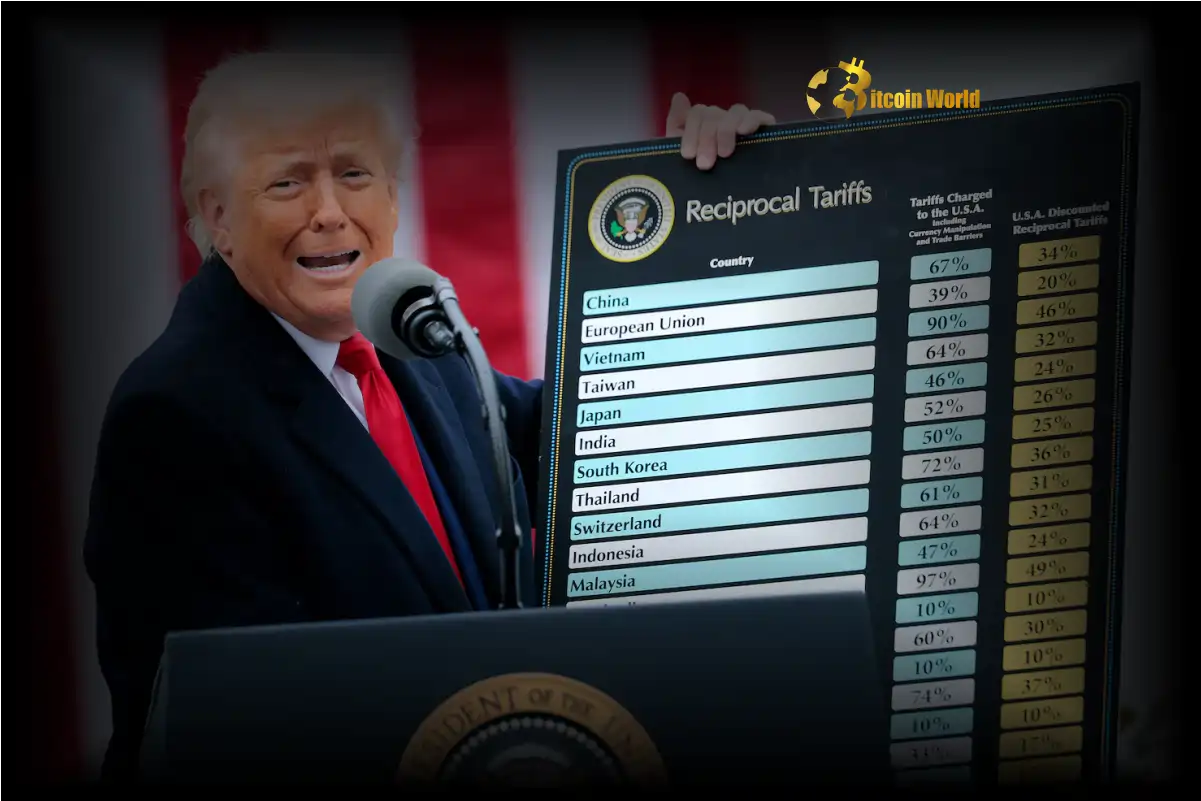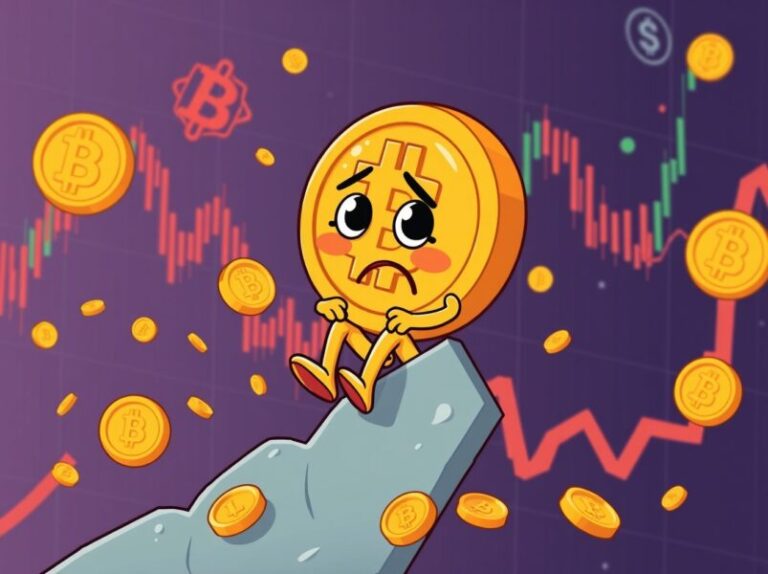In a significant development from Capitol Hill, Washington, D.C., the scope of presidential power over trade tariffs has been brought into sharp focus. U.S. Trade Representative Jamieson Greer recently addressed the Ways & Means Committee, making a statement that has reverberated across economic and political circles. According to reports from Walter Bloomberg X account, Greer …
Unveiling Limits: Trade Representative’s Bold Statement on Trump’s Tariff Authority


In a significant development from Capitol Hill, Washington, D.C., the scope of presidential power over trade tariffs has been brought into sharp focus. U.S. Trade Representative Jamieson Greer recently addressed the Ways & Means Committee, making a statement that has reverberated across economic and political circles. According to reports from Walter Bloomberg X account, Greer indicated that President Donald Trump’s authority to impose tariffs is not without boundaries. This revelation sparks crucial questions about the future of US trade policy and the balance of power within the U.S. government. Let’s dive into the details of this pivotal announcement and explore its potential ramifications.
What Did the Trade Representative Reveal About Trump’s Tariff Authority?
Jamieson Greer’s appearance before the Ways & Means Committee was closely watched, especially given the Trump administration’s assertive approach to trade and tariffs. His statement, as reported, directly addresses the extent of presidential power in this domain. Here’s a breakdown of what we understand:
- Not Unlimited Power: The core message is clear – the President’s authority to apply tariffs is not absolute. This suggests there are checks and balances in place, even in matters of trade, which are often considered under executive purview.
- Congressional Oversight: Greer’s testimony before the Ways & Means Committee itself highlights the role of Congress in overseeing trade policy. The committee’s questioning and Greer’s responses underscore the legislative branch’s interest and influence in this area.
- Legal and Constitutional Framework: The notion of limited authority implies that tariff decisions are likely subject to a legal and constitutional framework. This could mean that certain tariff actions could be challenged or reviewed, ensuring they align with existing laws and trade agreements.
This isn’t just about semantics; it’s about the very foundation of how US trade policy is formulated and implemented. It sets the stage for a potentially more nuanced and collaborative approach to international trade relations.
Why is the Scope of Presidential Tariff Authority Under Scrutiny?
The question of presidential tariff authority isn’t new, but it has gained prominence in recent years, particularly during the Trump administration. Several factors contribute to this increased scrutiny:
- Trump Administration’s Trade Actions: President Trump frequently utilized tariffs as a tool in trade negotiations and to address perceived trade imbalances. High-profile tariff disputes with countries like China and the European Union brought the issue of tariff authority to the forefront.
- Economic Impact of Tariffs: Tariffs can have significant economic consequences, affecting industries, consumers, and international relations. Concerns about these impacts naturally lead to questions about the process and authority behind tariff decisions.
- Separation of Powers: In the U.S. system of government, the separation of powers between the executive, legislative, and judicial branches is fundamental. Debates about tariff authority often touch upon the balance of power between the President and Congress in matters of trade.
- Global Trade Norms: International trade is governed by a complex web of agreements and norms. Unilateral tariff actions can sometimes clash with these norms, raising questions about the consistency and predictability of US trade policy on the global stage.
Therefore, Greer’s statement can be seen as part of a broader discussion about the appropriate limits of executive power in trade, especially in a globalized economy where trade policies have far-reaching effects.
The Role of the Trade Representative and Capitol Hill
Understanding the context of Jamieson Greer’s statement requires looking at the roles of both the Trade Representative and Capitol Hill.
The U.S. Trade Representative (USTR):
- Key Trade Negotiator: The USTR is the primary entity responsible for developing and coordinating U.S. international trade and commodity policy. They lead negotiations with foreign governments and represent the U.S. at international trade organizations.
- Advisor to the President: The Trade Representative serves as the principal trade advisor to the President. Their views and statements carry significant weight in shaping the administration’s trade agenda.
- Congressional Interaction: While part of the executive branch, the USTR regularly interacts with Congress, particularly committees like the Ways & Means Committee, which has jurisdiction over trade matters. This interaction is crucial for policy alignment and oversight.
Capitol Hill and the Ways & Means Committee:
- Legislative Oversight: Capitol Hill, as the seat of Congress, plays a vital role in legislative oversight of executive actions, including trade policy. Committees like the Ways & Means Committee are specifically tasked with reviewing and shaping trade-related legislation.
- Public Forum for Debate: Congressional hearings, such as the one where Greer testified, provide a public forum for discussing and debating important policy issues. They allow for transparency and accountability in government actions.
- Influence on Trade Laws: Congress has the power to enact laws that can shape and constrain presidential authority, including in the area of tariffs. The Ways & Means Committee’s engagement signals a potential legislative interest in clarifying or reinforcing the limits of Trump tariff authority or any presidential tariff authority in the future.
The dialogue between the Trade Representative and Capitol Hill is thus a critical part of the checks and balances system, ensuring that trade policy is not solely determined by the executive branch.
Implications for Future US Trade and Global Relations
Greer’s statement about the limits of Trump tariff authority has several potential implications:
- More Predictable Trade Policy: If presidential tariff authority is perceived as constrained, it could lead to a more predictable and stable trade policy environment. This predictability is beneficial for businesses, investors, and international partners.
- Increased Congressional Role: Acknowledging limits on presidential authority could empower Congress to play a more active role in shaping trade policy. This might lead to more bipartisan and consensus-based approaches to trade.
- Potential for Reduced Trade Tensions: If the U.S. signals a move away from unilateral tariff actions, it could help reduce trade tensions with other countries. This could foster a more cooperative global trade environment.
- Legal Challenges to Tariffs: The recognition of limits might also open the door for legal challenges to tariffs that are seen as exceeding presidential authority. This could create a more judicial dimension to trade policy oversight.
However, it’s also important to consider potential challenges:
- Executive Branch Pushback: Future administrations might push back against perceived limitations on their tariff authority, potentially leading to further political and legal battles.
- Navigating Geopolitical Tensions: Trade is often intertwined with geopolitical considerations. Limits on tariff authority could constrain the U.S.’s ability to respond assertively to unfair trade practices or geopolitical challenges.
- Domestic Political Pressures: Domestic industries and political groups may lobby for tariff protections, and a perceived weakening of presidential tariff power could create domestic political tensions.
Actionable Insights and Looking Ahead
For businesses and stakeholders involved in international trade, Greer’s statement offers several key takeaways and actionable insights:
- Monitor Policy Developments: Closely track further statements and actions from both the USTR and Capitol Hill regarding trade policy and tariff authority. Policy shifts can significantly impact business strategies.
- Assess Risk and Opportunity: Evaluate how potential changes in US trade policy might affect your supply chains, markets, and competitive landscape. Identify both risks and opportunities arising from a potentially more constrained approach to tariffs.
- Engage in Policy Dialogue: Participate in industry associations and engage with policymakers to voice your perspectives on trade policy. Your input can help shape future trade regulations and agreements.
- Prepare for Legal and Regulatory Scrutiny: Be prepared for potential legal challenges to tariff actions and increased regulatory scrutiny of trade practices. Ensure compliance and seek legal counsel when needed.
The unfolding narrative around Trump tariff authority and its limitations is a crucial development in the landscape of international trade. It signals a potential shift towards a more balanced and perhaps less unilateral approach to trade policy. For those operating in the global economic sphere, understanding these nuances is not just academic—it’s essential for strategic planning and navigating the complexities of the modern trade environment.
Conclusion: A New Chapter in US Trade Policy?
Jamieson Greer’s statement on Capitol Hill, highlighting the limits of presidential Trump tariff authority, marks a potentially pivotal moment for US trade policy. It underscores the enduring principles of checks and balances within the U.S. government and signals a possible recalibration of trade policy away from unilateral actions towards a more collaborative and predictable framework. While the full implications will unfold over time, this development warrants close attention from anyone invested in international trade, global economics, and the evolving dynamics of power in Washington D.C. The future trajectory of US trade policy may well be shaped by this crucial acknowledgement of limitations.
To learn more about the latest crypto market trends, explore our article on key developments shaping Bitcoin price action.









